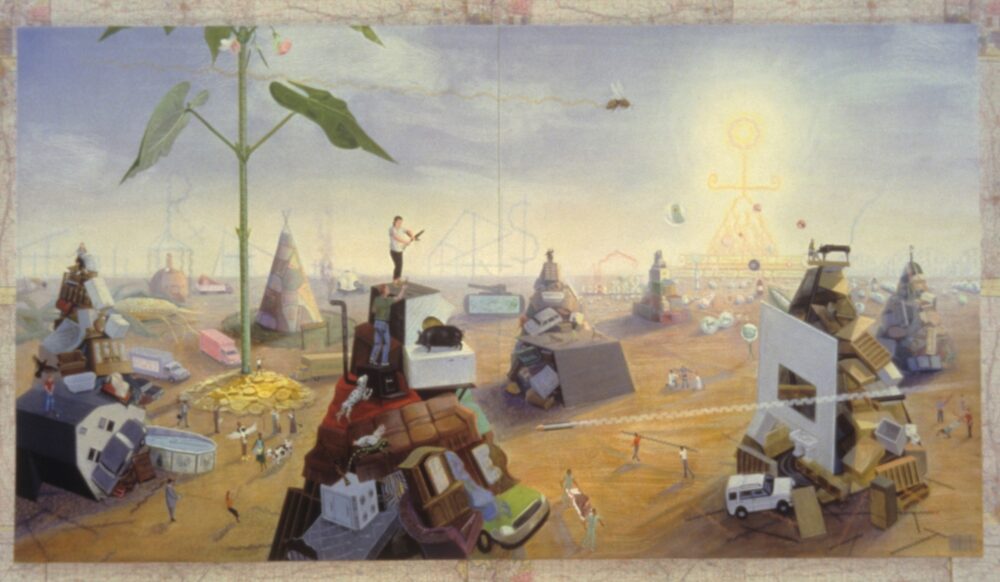
Frank Moore
1953–2002
Frank Moore was born in New York in 1953. He grew up on Long Island and spent his summers with his family in the Adirondacks. From his earliest youth, he had a strong interest in the natural world, Moore attended Yale College, and spent a year in Paris at the Cite des Arts. He moved to the SoHo area of Manhattan in 1977.
In addition to creating paintings and drawings, he designed sets and costumes and collaborated with several major choreographers and ballet companies. He formed a long-term partnership with choreographer and dancer Jim Self with whom he created the film Beehive in 1985, which was expanded into a ballet commissioned by the Boston Ballet in 1987.
In 1985, Moore and his partner, Robert Fulps, purchased a farmhouse in Deposit, New York. Renovating the house and establishing a flourishing garden deepened his connection to nature. He converted the barn on the property into a painting studio so that he could spend most of each summer, and much of the fall, in the country.
In 1985, Moore learned he was HIV positive. After his diagnosis, his work increasingly grappled with issues around AIDS, environmental degradation, bioethics, homosexuality, and health care. He became a noted AIDS activist. As one of the founding member of Visual AIDS, he was instrumental in helping create and launch the Red Ribbon Project, which became a worldwide symbol of AIDS awareness.
Moore's first solo show was at the Clocktower in Tribeca in 1983. He had numerous one-person exhibitions most notably at Sperone Westwater Gallery, which continues to represent his estate.
His work has been exhibited widely in the US and internationally, including in the 1995 Whitney Biennial, at Artists Space in New York City, the Parish Art Museum in Southampton, New York, and in museums in London and Japan. Moore received the Academy Award in Art from the American Academy of Arts and Letters in 1999. A mid-career retrospective of his work opened at the Orlando Museum of Art in 2002, shortly after his death, and subsequently traveled to the Albright-Knox Art Gallery in Buffalo.
Moore's work is represented in the collections of those museums, as well as in the Museum of Modern Art, the Whitney Museum of American Art, and the New York Public Library. A monograph on his work, Between Life & Death, was published by Twin Palms Publishers in 2002.
His papers are in the collection of the Fales Library of New York University. A showing of the film Beehive was a highlight of the recent East Village Show at the New Museum of Contemporary Art. Most recently, the Grey Art Gallery concurrently with the Tracey/Barry Gallery at NYU’s Fales Library presented “Toxic Beauty” a survey of Moore’s career.
SHORT FILM: Created by Frank Moore's sister Rebecca Moore and Denise Zmekhol, this short film (at the bottom of the page) offers an intimate view of the artist's life and work, including interviews with him, images of his works, and views of his house and grounds in Deposit, New York.




























































































